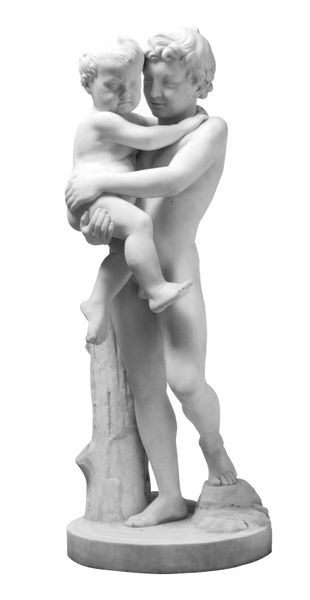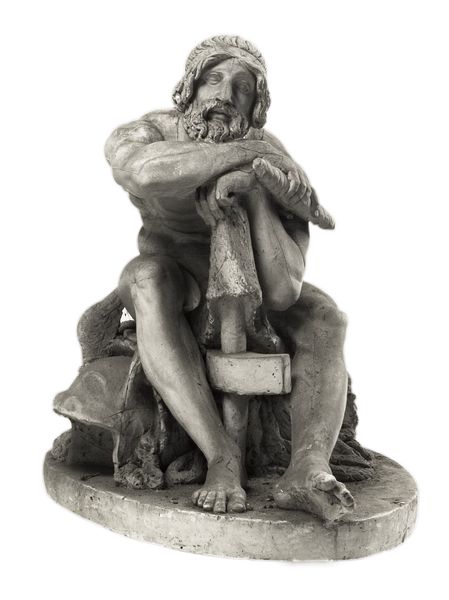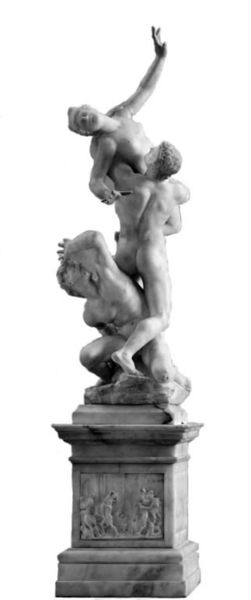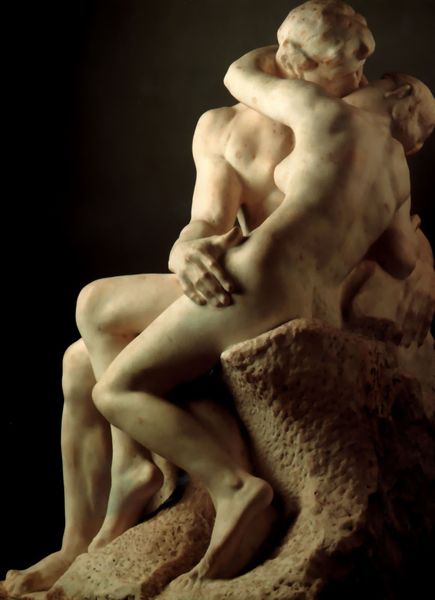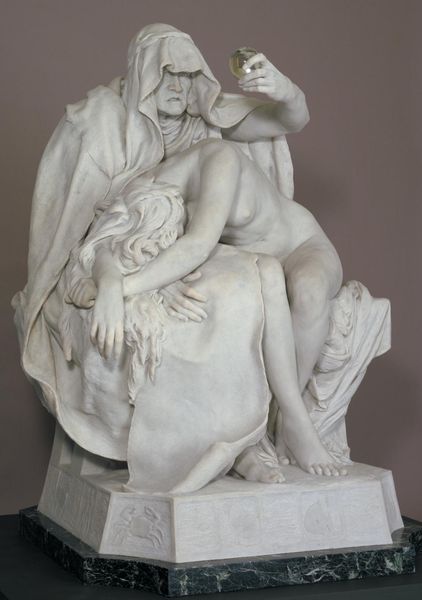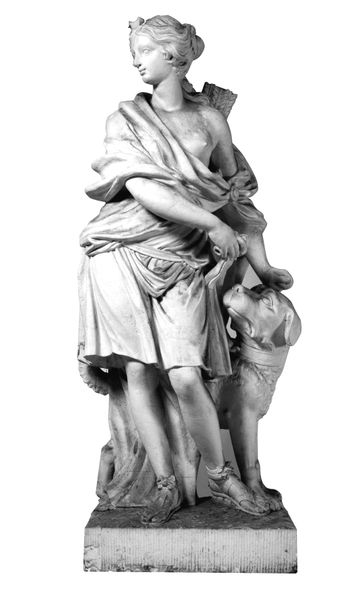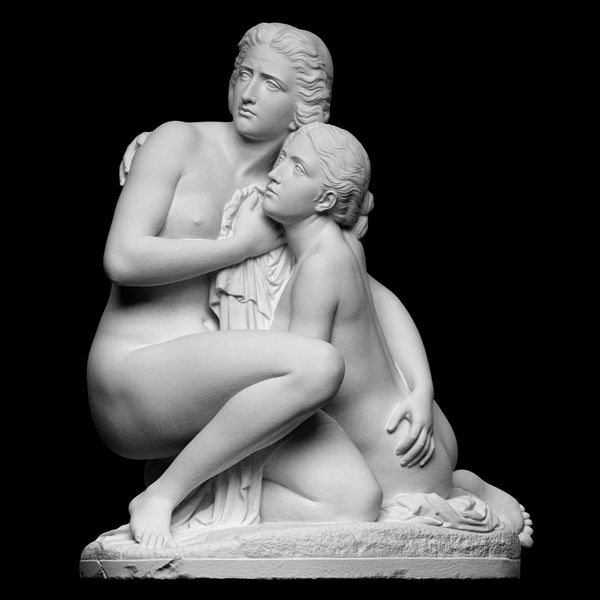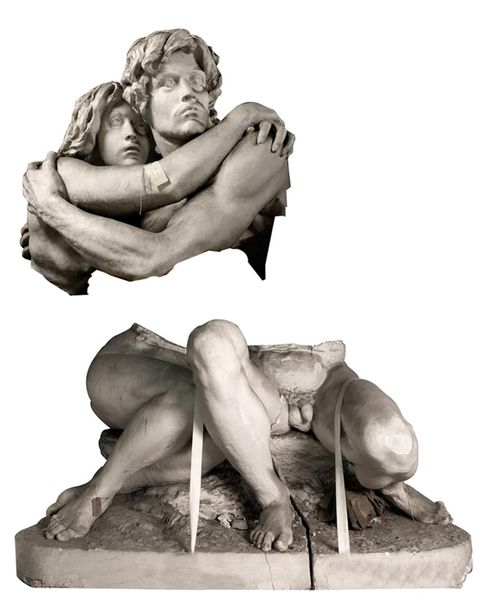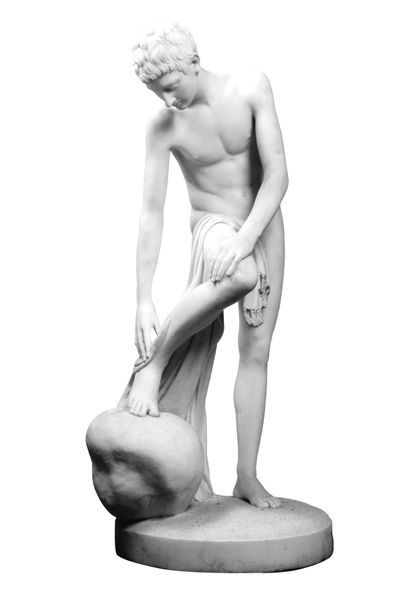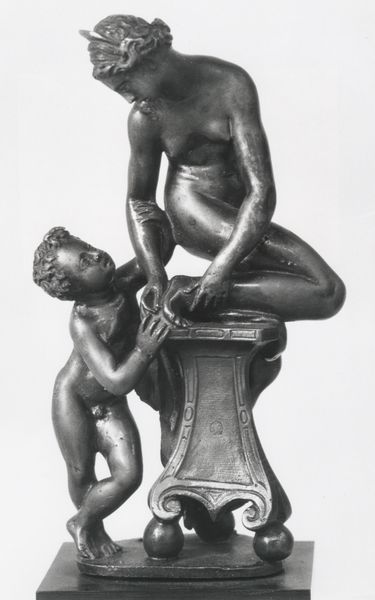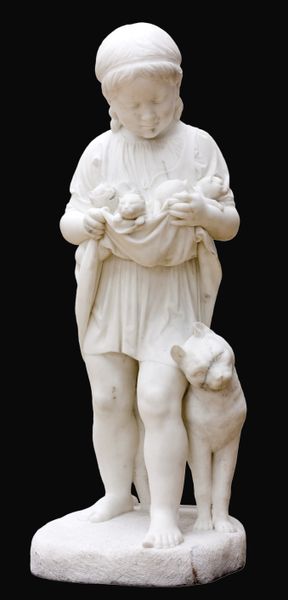
sculpture, marble
#
neoclacissism
#
narrative-art
#
sculpture
#
greek-and-roman-art
#
figuration
#
sculpture
#
history-painting
#
academic-art
#
marble
Dimensions: 71 cm (height) x 51 cm (width) x 77 cm (depth) (Netto)
Hermann Ernst Freund created this sculpture of Thor in the 19th century from marble. The choice of marble influences the sculpture's appearance, giving it a smooth, cool, and elegant feel. Carving marble is a subtractive process, demanding careful removal of material to reveal the desired form. The sculpture is a single piece, meaning Freund had to plan meticulously to avoid mistakes. The creation of this sculpture draws on a rich tradition of sculpting that stretches back to antiquity. Skilled artists learned their craft through apprenticeships, mastering techniques passed down through generations. The labor-intensive process highlights the skill and time required to produce such a piece. Understanding the material and making of ‘Thor Resting with his Hammer’ allows us to appreciate the artistry and effort involved, challenging any rigid separation between art and craft.
Comments
statensmuseumforkunst almost 2 years ago
⋮
Freund belongs to the generation that succeeded Bertel Thorvaldsen (1770-1844), whom he served as an assistant at the master’s studio in Rome. A break with Thorvaldsen This depiction of Thor, the Norse god of thunder, is rich in contrast and constitutes a break with certain characteristics of his predecessor’s art. Working in accordance with the neoclassical idioms of his day, Thorvaldsen cultivated a link between form and subject matter insofar as the figures depicted often drew on sources from Antiquity and were executed in a ”classic” style. Motifs from Norse mythology During the first decades of the 19th century, however, tastes in Northern Europe ran increasingly towards motifs from Norse mythology while classical Mediterranean art remained the stylistic model for the art of sculpture. In Freund’s sculpture, this contrast is intensified by the figure’s seated, half apathetic pose; very different from the neoclassical focus on active and outward-looking heroic male figures. Uniting classical form with innovative subject matter The Norse motif is petrified, presented in the marble of Classical tradition. When viewed from the back, the sculpture shows how Freund sought to unite classical form with innovative subject matter: The exaggeratedly muscular back is a quotation from The Torso Belvedere from the Vatican Museum in Rome, a major work of ancient sculpture and one of the models of neoclassicism.
Join the conversation
Join millions of artists and users on Artera today and experience the ultimate creative platform.
